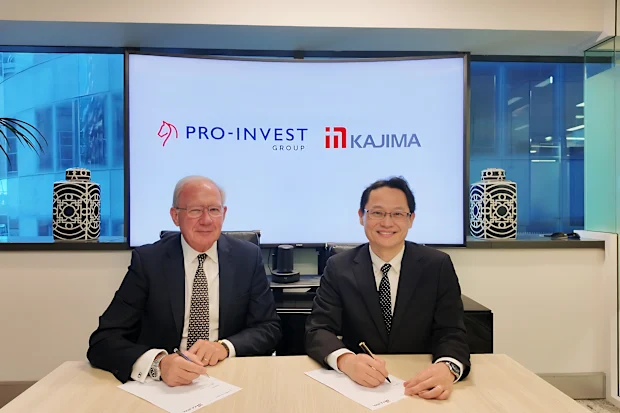
Japanese Capital Transforms Australia's Build-to-Rent Housing Market
Japanese Capital Transforms Australia's Build-to-Rent Housing Market
The quiet rush of Japanese capital into Australian rental housing signals a profound shift in how property development happens down under. At the center of this transformation is a strategic partnership between Pro-invest Group and Japan's Kajima Corporation, set to develop a build-to-rent (BTR) portfolio worth up to $1.5 billion across Australian cities.
This isn't an isolated venture.
Japanese investors have become the most active source of offshore capital in Australia throughout 2023, putting $2 billion towards assets down under. The apartment sector, including build-to-rent and student accommodation, accounts for 39% of that foreign investment.
Why are Japanese investors so bullish on Australian rental housing?
Strategic Diversification Meets Market Opportunity
The Pro-invest and Kajima partnership has already commenced work on its first project—a 300-unit development in Sydney—establishing immediate momentum in Australia's emerging BTR sector.
For Japanese investors, Australia represents both strategic diversification and growth potential. Japanese real estate companies are investing in Australia as a hedge against Japan's sliding housing market, which has seen 2024 housing starts shrink to half of 1994 levels. Meanwhile, Australia continues to experience strong population-driven growth.
This capital injection into mid-market rental housing addresses supply constraints in Australia's major urban centers at a critical time.
Beyond A Single Partnership
The Pro-invest and Kajima collaboration represents part of a broader trend. Several major Japanese developers are investing in Australian build-to-rent projects, creating a significant wave of international capital entering the market.
As of 2024, there are more than 60 build-to-rent projects either planned or in construction, delivering 20,000 new dwellings in Australia, according to Ernst & Young. Industry projections suggest this will balloon to 55,000 by 2030.
The structure of these partnerships typically combines local market knowledge with Japanese construction expertise and capital—creating resilient operating models for delivering rental housing at scale.
Market Signals Worth Noting
The timing of these investments reveals several important market shifts that commercial real estate investors should understand:
First, international capital is actively seeking opportunities in Australia's residential sector despite recent economic headwinds. This counters the narrative that rising interest rates would significantly dampen property investment.
Second, the build-to-rent model is gaining institutional credibility beyond early adopters. What was once considered an experimental asset class is now attracting significant global capital.
Third, construction cost pressures may be stabilizing enough to make large-scale residential development viable again. After years of volatility, these partnerships suggest a more optimistic outlook.
For commercial property developers and investors, these Japanese-Australian partnerships demonstrate a strategic counter-cyclical approach—establishing market position while competition remains limited.
Financing Innovation Drives Market Growth
The surge in build-to-rent development highlights how financing innovation can unlock property market potential. Traditional development financing models often struggle with the longer-term returns of build-to-rent assets.
Japanese investors bring patient capital with longer investment horizons that align perfectly with BTR's extended yield profiles. This partnership structure solves a fundamental financing challenge that has limited BTR growth in Australia.
Greg Bartlett, Co-Founder and CEO of Lendhaus, notes the significance of these cross-border partnerships: "The global nature of commercial real estate financing is creating opportunities that simply wouldn't exist with domestic capital alone. When borrowers can access global financiers through standardized processes, we see innovation accelerate."
For Australian property developers, the lesson is clear: limiting financing options to domestic sources may mean missing significant opportunities.
Future Outlook
The Pro-invest and Kajima partnership signals a potential tipping point for Australia's build-to-rent sector. As these initial projects demonstrate success, we can expect additional Japanese and global investors to enter the market.
For commercial property investors, several strategic considerations emerge:
The potential to secure prime locations for BTR development before broader market entry occurs represents a time-limited opportunity.
Building relationships with international capital partners now may provide competitive advantages as the sector matures.
Standardizing financing and development approaches will become increasingly important as the sector scales.
For Australia's housing affordability challenges, this injection of purpose-built rental supply represents a crucial alternative pathway to traditional home ownership models.
The Global Financing Advantage
The success of these Japanese-Australian partnerships demonstrates why global financing connections matter in commercial real estate. Developers who can access international capital pools gain significant advantages in scale, resilience, and innovation capacity.
As the build-to-rent sector continues its rapid growth in Australia, financing agility will separate market leaders from followers. The ability to connect with global financiers, standardize processes, and create certainty will determine which projects move forward and which remain conceptual.
For commercial real estate investors and developers looking to capitalize on this trend, the message is clear: global financing connections are no longer optional—they're essential for competitive advantage in markets where local capital alone cannot meet demand.
The Japanese capital transformation of Australia's build-to-rent housing market has only just begun.

